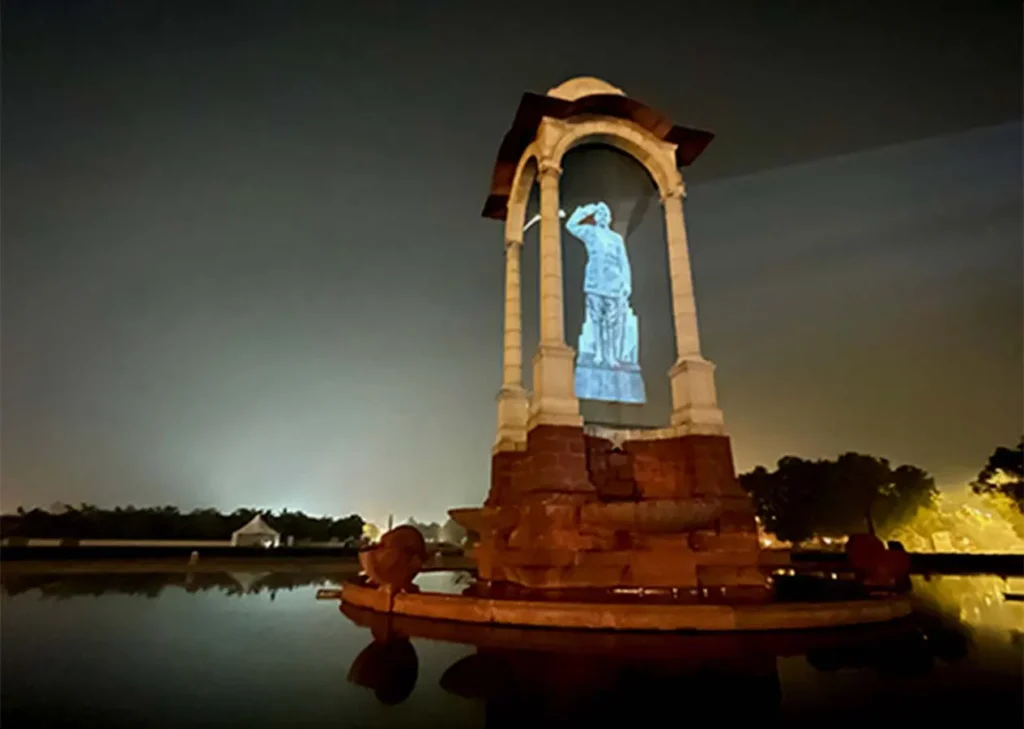
Netaji Hologram Statue

Prime Minister Shri Narendra Modi unveiled a magnificent hologram statue of Netaji Subhas Chandra Bose, designed and developed by Tagbin.
Location
India Gate, New Delhi
Launch Year
2022
Client
Ministry of Culture, GoI
Hologram Statue Of Netaji Subhas Chandra Bose
A hologram statue of Netaji Subhas Chandra Bose was designed and developed by Tagbin to pay homage to the revered freedom fighter on his 125th birth anniversary. Prime Minister Shri Narendra Modi unveiled this holographic marvel on 23 January, also recognized as Parakram Divas under the great canopy of Amar Jawan Jyoti at the India Gate.


Technology Behind The Marvel
The statue is approximately 28 feet in length and 7.5 feet in width. It is powered by a 4K projector capable of delivering a brightness level of 30,000 lumens. This is one of the world’s biggest holographic statues projected on a 40-foot holographic screen that is placed inside the canopy. It is also made invisible to the naked eye. The screen has been built in a way that it can withstand high winds and rain and remain stable in all weather conditions. The 3D hologram can be viewed by visitors even without 3D glasses. This technology is new in India and Netaji’s statue is one of its kind in the country.
Tagbin has always believed in using cutting-edge technology to bring India’s rich heritage and history to life. Netaji Subhas Chandra Bose’s hologram statue honors his legacy while reminding citizens of his selfless contribution towards the liberation of India. This hologram had been made temporarily till a granite statute of Netaji replaced it under the great canopy on 8 September ‘22.
